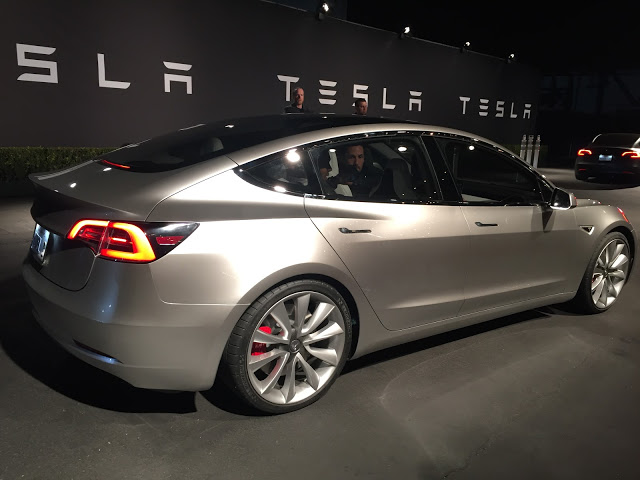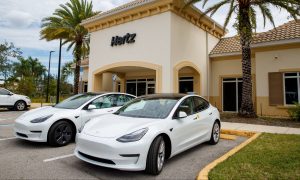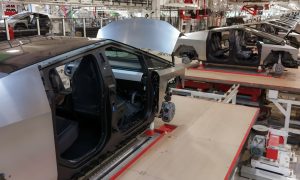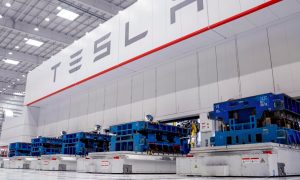Tesla CEO Elon Musk has revealed that Model 3 battery options will max out at 75 kWh due to the vehicle’s shorter wheelbase, relative to the larger Model S and Model X which can accommodate up to a 100 kWh battery pack size.
The highly anticipated mass market electric car will be using Tesla’s newest high performance ‘2170 cell’ that’s currently being produced at Gigafactory 1 in Sparks, Nevada, and being used in Tesla’s Powerpack and Powerwall energy storage systems. Beyond having a larger form factor than the existing 18650 battery cell being used in Tesla’s existing vehicle fleet, the 2170 lithium-ion cell that boasts a higher energy density by as much as 30%.
ALSO SEE: Tesla Gigafactory 1 is beginning to look like a small city [Mar. 2017 photos]
Though Tesla has not specified the maximum driving range for Model 3, one can expect that a “Model 3 75D” would have a range higher than the heavier and larger Model S with 75 kWh pack. Looking at the Model S 60 which is capable of 210 miles of range, or .285 kWh/mile, one can assume that a smaller and lighter Model 3 would consume roughly .242 kWh/mile. Based on that estimate, a rear wheel drive Model 3 with 75 kWh battery pack will top out at 310 miles of range per charge. By comparison, the Chevy Bolt has a 60 kWh battery pack and is capable of achieving 240 miles of driving range, or .250 kWh/mile.
The shorter wheelbase only allows for a 75 kWh pack in Model 3 at current cell/module energy densities
— Elon Musk (@elonmusk) March 24, 2017
Model 3 to lead Chevy bolt with more range
It’s worth noting that the Chevy Bolt has a much higher drag coefficient than the Tesla Model S, which shares a similar aerodynamic design as the Model 3. The Bolt’s drag coefficient is .32 while the Model S has a drag coefficient of .24.
The lead designer of the Chevy Bolt, Stuart Norris, claims, “It’s a disaster for aero(dynamics)”, according to Digital Trends. The Model 3 on the other hand, has a very fluid design and will undoubtedly out-class the Chevy Bolt in aerodynamics and range. The more efficient Model 3 will allow the vehicle to have less battery for the same range.
Oh so little faith
— Elon Musk (@elonmusk) March 24, 2017
Musk later stated that the Model 3 would offer more range than the Chevy Bolt, which we are not surprised by. Musk also claims that cars like the Chevy Bolt are sold at a loss and help the manufacturer comply with emission requirements. While Tesla does generate revenue from emissions credits, they aren’t considered to be stable sources of income.
“What you will see our competitors do is they will limit their production, and they will only sell in ZEV states or almost entirely in ZEV states. That doesn’t scale. That will take them to maybe 40,000 units or 50,000 units a year, best case, but we’re talking about doing 500,000 units a year.” – Elon Musk Q3 Earnings Call
Musk tweeted a video showing a Model 3 release candidate driving down a local street today. The company says it’s on track to begin production of Model 3 in July. Tesla is expected to throw a Model 3 ‘Part 3’ launch event sometime in June ahead of planned production.











